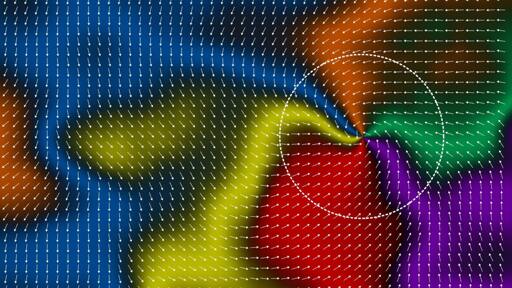Slashdot Summary
An international research team has for the first time imaged and controlled a type of magnetic flow called altermagnetism, which physicists say could be used to develop faster and more reliable electronic devices. Financial Times:
A groundbreaking experiment at a powerful X-ray microscope in Sweden provides direct proof of the existence of altermagnetism, according to a paper published in Nature on Wednesday. Altermagnetic materials can sustain magnetic activity without themselves being magnetic.
The team from the UK’s Nottingham university that led the research said the discovery has revolutionary potential for the electronics industry. “Altermagnets have the potential to lead to a thousand-fold increase in the speed of microelectronic components and digital memory, while being more robust and energy-efficient,” said senior author Peter Wadley, Royal Society research fellow at Nottingham.
Hard disks and other components underpinning the modern computers industry process data in ferromagnetic materials, whose intrinsic magnetism limits their speed and packing density. Using altermagnetic materials will allow current to flow in non-magnetic products.
Archived at https://archive.ph/Fk7xv
Super cool. I hope this goes somewhere
Yeah, it seems like it’s got quite a bit of potential (even though I only understand the broadest strokes of it). Unfortunately, it’ll probably be a while before we see actual/practical applications since we’re only at the “proving it exists” phase.
Yeah, one of the researchers said 10-ish years. Which is fast for new tech but slow for life.
I don’t know how I missed the mention of 10 years, but thanks. At least they have some kind of ballpark estimate. As with most new battery tech announcements, I’m not going to hold my breath, lol.
And it sounds like it’s not just batteries. This has applications for memory and data storage (though I’m just parroting what they said). We’ll see what happens in the next decade or two!
My bad, I phrased that poorly. I meant it like when new battery technology is announced, it seems like nothing ever comes of it.
It’s because it goes from tiny bespoke samples for testing, then confirm it’s actually what scientists actually think is happening, then R&D to scale up, then figuring out how to make it profitable. After all that work, if it’s not profitable, it doesn’t get made.
Just remember those old gen rechargeable double A batteries. After like 3 to 6 months they wouldn’t charge well and you constantly had to switch batteries after half a day.
Like these:

Now we just buy new phones when the battery doesn’t last as long. That’s all in about 20 years. This stuff is exciting but I also wish shit was faster just to see it in my lifetime.
Can’t wait to be growing vegetables with an automated system powered by solar power and my loyal robotic attack dog/pack mule.
you mean in our lifetime ?
Yes. Researcher said 10 years (probably at the earliest), but I’m more of an “at all” kind of person. I like celebrating scientific achievements for their own sake, because it’s something we humans figured out.
What does it mean to sustain magnetic activity without being magnetic? What defines magnetic activity?
The material itself cannot be magnetized, which is what they mean by not “being magnetic”. However, these do have spin currents that can be measured and controlled, so they sustain “magnetic activity”. Kind of like a hybrid between ferromagnetic and antiferromagnetic.
Hmm, interesting. Thanks!
you mean like eddy currents?
Does this have anything to do with transistors and computation? Or are they only talking about harddrives? A huge increase in density would be cool, but I’m not really convinced they would get much faster because most of the slowness comes from physically moving a reader arm and lining it up with insane accuracy. It may be able to complete with an SSD for density, but speed is debatable.
Yeah, knowing how science and tech journalists often have little idea what they are talking about and the description itself, I’m skeptical that this will be as revolutionary as it’s being presented to be. I’d love to be wrong, though.
And it does sound like extra speed is possible. It sounded like the magnetic platters in hard drives are too magnetic, and spend some time compensating for undesired electromagnetic effects that occur while reading the platter. Which makes sense because it’s spinning fast while another electromagnet tries to read it and electromagnetic fields moving relative to each other are known to react and interact. Part of that would be how it works at all, but there could be another part that counteracts that and maybe requires time to stabilize or multiple passes to give an accurate average.
Though this is pure speculation, I don’t have much in depth knowledge of how magnetic drives work, other than it involving neat tricks like spinning, magnets, and probably some sort of sorcery or witchcraft.
Can i make a ufo out of this
Would this help EV motors or batteries? A more efficient power train?






